#Open cluster
Explore tagged Tumblr posts
Text

The Rosette Nebula, C49 // Dudás László
At the center of this nebula that stretches 130 light years across is an open star cluster known as the Satellite Cluster (NGC 2244). It is the hottest stars in this cluster that are ionizing the gas surrounding them, resulting in the beautiful Rosette Nebula we see. It was English astronomer John Flamsteed (1646-1719) that found the Satellite Cluster.
#astronomy#astrophotography#caldwell catalog#nebula#emission nebula#star-forming region#rosette nebula#satellite cluster#open cluster#star cluster#stars#NGC 2237#NGC 2238#NGC 2239#NGC 2244#NGC 2246#Sh2-275#caldwell 49#C49#monoceros
46 notes
·
View notes
Text
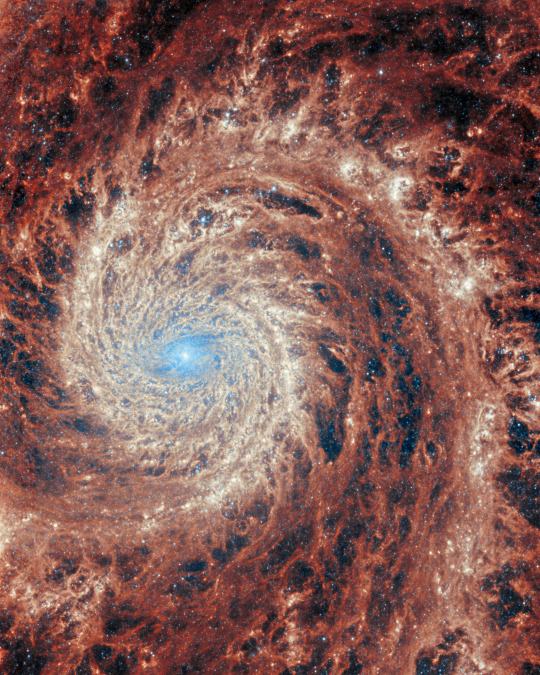
M52: Open Cluster in Cassiopeia © JWST
#messeir 52#nasa#JWST#webb#space#astrophotography#open cluster#james webb space telescope#stars#night sky#universe#solar system#astronomy#cosmos#galaxy#planet
2K notes
·
View notes
Text
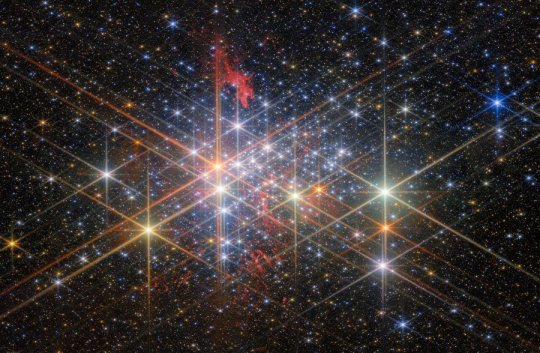
Westerlund 1, 12000 lys away l Webb
#stars#open cluster#space#astrophotography#astronomy#planets#webb#james webb space telescope#sky#galaxy#universe#solar system#nasa#westerlund 1
646 notes
·
View notes
Text
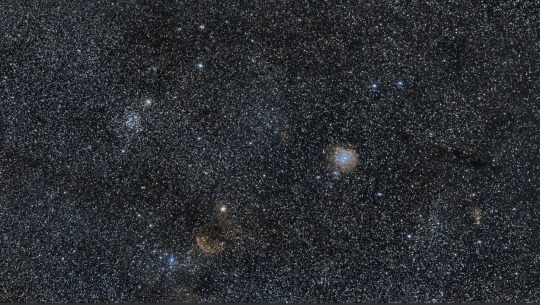
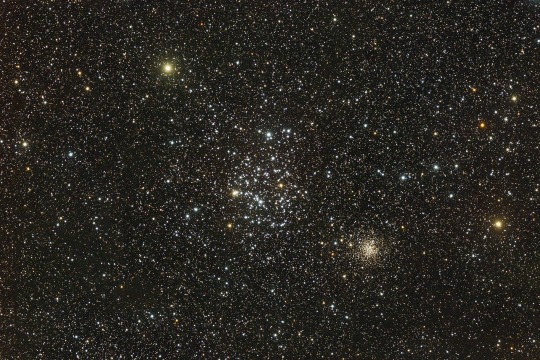
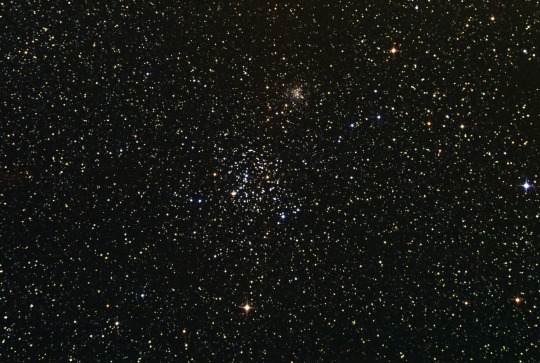

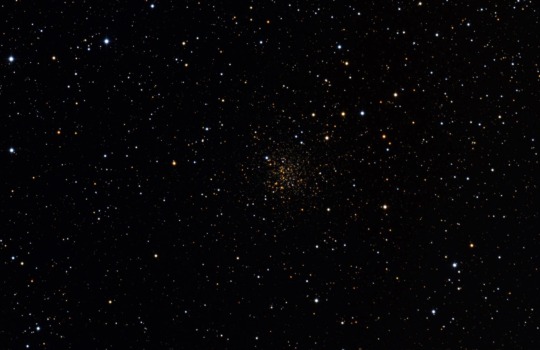
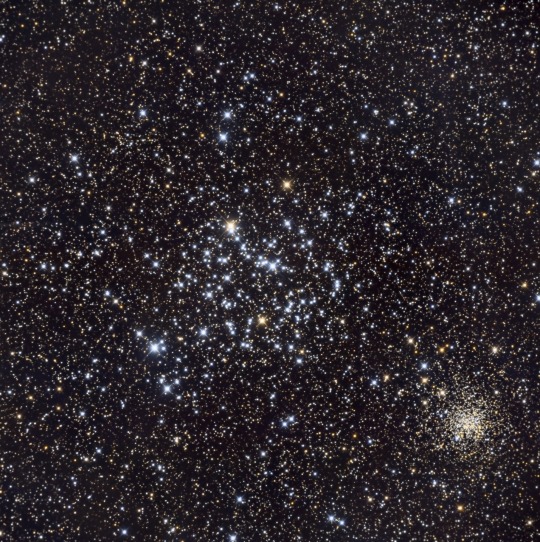
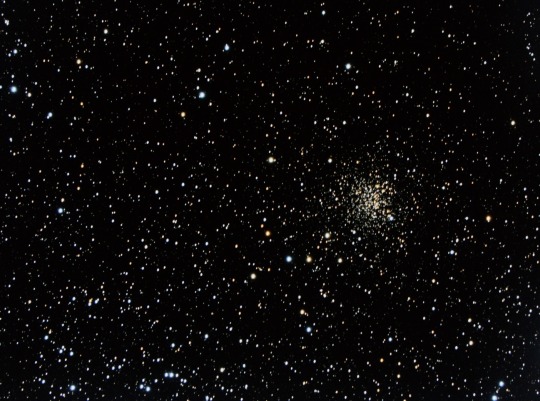
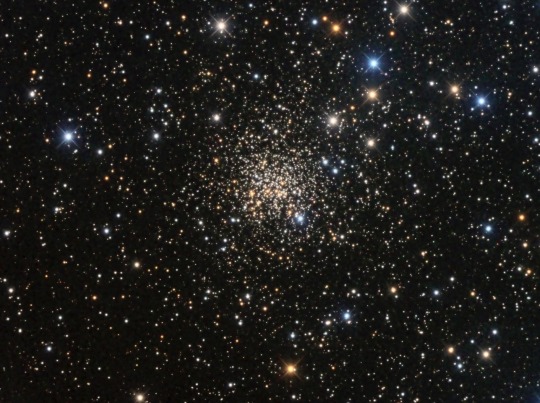

Some of my favourite star clusters!
#neutron stars#stars#star photography#starchaser#star cluster#open cluster#globular cluster#astronomy#astronomers#nasa#universe#astrophotography#nasa photos#astrophysics#outer space#nasawebb#hubble space telescope#space exploration#space#science#james webb space telescope#telescope#science facts#planetary science#space science#planetary nebula#solar system#the universe#alternate universe#i love astronomy
223 notes
·
View notes
Text

Bright Stars and Dark Clouds - September 25th, 1996.
"Did you ever feel like a black cloud was following you around? Don't feel bad - this even happened to the bright young stars of the open cluster NGC 6520. On the left are the cluster's bright blue stars. They formed only millions of years ago - much more recently than our ancient Sun, which formed billions of years ago. On the right is an absorption nebula from which the stars might have formed. This nebula contains much opaque dust, which blocks visible light from the many stars that would have been seen in the background. The study of open clusters is valuable for many reasons, including understanding star formation and the calibration of the distance scale of our Universe."
47 notes
·
View notes
Text
The Bubble Nebula (NGC7635) with the Scorpion Cluster (M52)

#seestar#seestar s50#astronomy#astrophotography#space#deep space#nebula#siril#milky way#backyard astronomy#budget astronomy#driveway astronomy#planetary nebula#bubble nebula#scorpion cluster#star cluster#open cluster#messier 25#ngc 7635#emission nebula#cassiopeia
45 notes
·
View notes
Text
Gum 23
A large wedge shaped emission nebula, sliced by lanes of obscuring dust
A Nebula in Vela Also catalogued as RCW 38 Image exposure: 58 minutesImage Size:Size: 2.09° x 1.39°Image date:2024-04-11 I managed less than an hour of imaging data before the clouds came and put a stop to proceedings. This is an HII (ionised hydrogen) nebula with a very young star cluster emerging from its birthplace within the gas cloud. Gum 23 is described in Hartung’s Astronomical…

View On WordPress
#amateur astronomy#Astronomy#Cosmic Focus Observatory#cosmos#deep sky#Featured#FZ velorum#Galaxy#Gum 23#image#nature#open cluster#photography#RCW 38#science#Seagull Nebula#Skywatcher EQ6-R#Skywatcher esprit 120#space#Stars#Universe#Vela#weather#ZWO ASI071
30 notes
·
View notes
Text
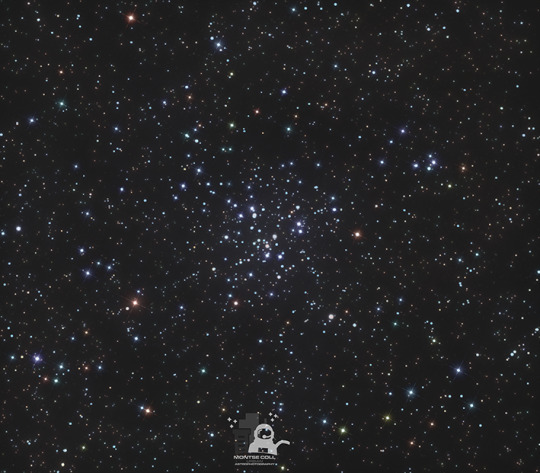
M41
Constellation Canis Major.
Distance: 2.300 ly
Nov 21 2023 -Montcada i Reixac
#astrophotography#urban astrophotography#astrophotos#astro observations#cosmos#original photographers#astronomy#universe#original photographic works#messier 41#open cluster
36 notes
·
View notes
Text

The Pleiades star cluster, my personal favorite!
Fun fact: The car company Subaru’s name and logo represent The Pleiades!
7 notes
·
View notes
Photo
(source)

Pleiades: The Seven Sisters Star Cluster
Credits: Raul Villaverde Fraile
113 notes
·
View notes
Text

The Satellite Cluster, C50 // Serge Sankov
In the heart of the Rosette Nebula lies the Satellite Cluster (NGC 2244). This is an extremely young star cluster at only 5 million years old. The brightest stars among them, over 400,000 times brighter than the Sun, are responsible for lighting up the gas around them.
#astronomy#astrophotography#caldwell catalog#stars#star cluster#open cluster#satellite cluster#NGC 2244#caldwell 50#C50#monoceros
21 notes
·
View notes
Text
The Double Cluster in Perseus consists of two open star clusters near each other on the sky’s dome. Amateur astronomers know them as h and Chi Persei. The two clusters reside in the northern part of the constellation Perseus, quite close to the constellation Cassiopeia the Queen. If you have a dark sky and find Cassiopeia – which is easy, because the constellation has a distinctive M or W shape – be sure to look for Perseus, too. Then just scan between the two constellations with your binoculars for two glittering groups of stars. The Double Cluster – a breathtaking pair of open clusters, each containing supergiant suns – will be there.
1 note
·
View note
Text
#SomewhereDeepInTheNight "This image was obtained with the wide-field view of the Mosaic camera on the WIYN 0.9-meter telescope on Kitt Peak, Arizona. The Pleiades are an open cluster easily visible to the naked eye. The cluster is dominated by several hot, luminous and massive stars. The blue nebulosity surrounding the brightest stars are due to blue light from the stars scattering off of dust grains in the interstellar gas between us and the stars. The cluster is also known as the 'Seven Sisters'. And in Japan it is called Subaru. " NOIRLab
#M45 Pleiades#Somewhere Deep In The Night#Astronomy#Stellar Cluster#Open Cluster#Seven Sisters#Kitt Peak Arizona
0 notes
Text

NGC3532 The Pincushion Cluster
#astronomy#astronomers#universe#nasa#nasa photos#astrophotography#astrophysics#outer space#nasawebb#hubble space telescope#space exploration#space#science#nasa science#science facts#planetary science#space science#solar system#our universe#the universe#open cluster#globular cluster#sky photography#space photography#i love astronomy#astronomy facts#astronauts#galaxies#galaxy#neutron stars
132 notes
·
View notes
Text
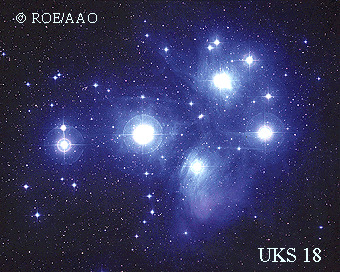
The Pleiades Star Cluster - September 3rd, 1996.
"It is the most famous star cluster in the sky. The Pleiades can be seen without binoculars from even the depths of a light-polluted city. Also known as the Seven Sisters and M45, the Pleiades is one of the brightest and most easily visible open clusters in the sky. The Pleiades contains over 3000 stars, is about 400 light years away, and is only 13 light years across. Quite evident in the above photograph is the blue reflection nebula that surrounds the bright cluster stars. Low mass, faint, brown dwarfs have been found in the Pleiades."
#nasa#space#cosmos#universe#astronomy#astrophysics#astrophotography#pleiades#seven sisters#star cluster#open cluster
42 notes
·
View notes
Text

Stars in the open cluster Trumpler 14 ©
#hubble telescope#stars#open star cluster#astrophotography#nasa#space#galaxy#universe#astronomy#solar system#planet#cosmos#night sky
923 notes
·
View notes